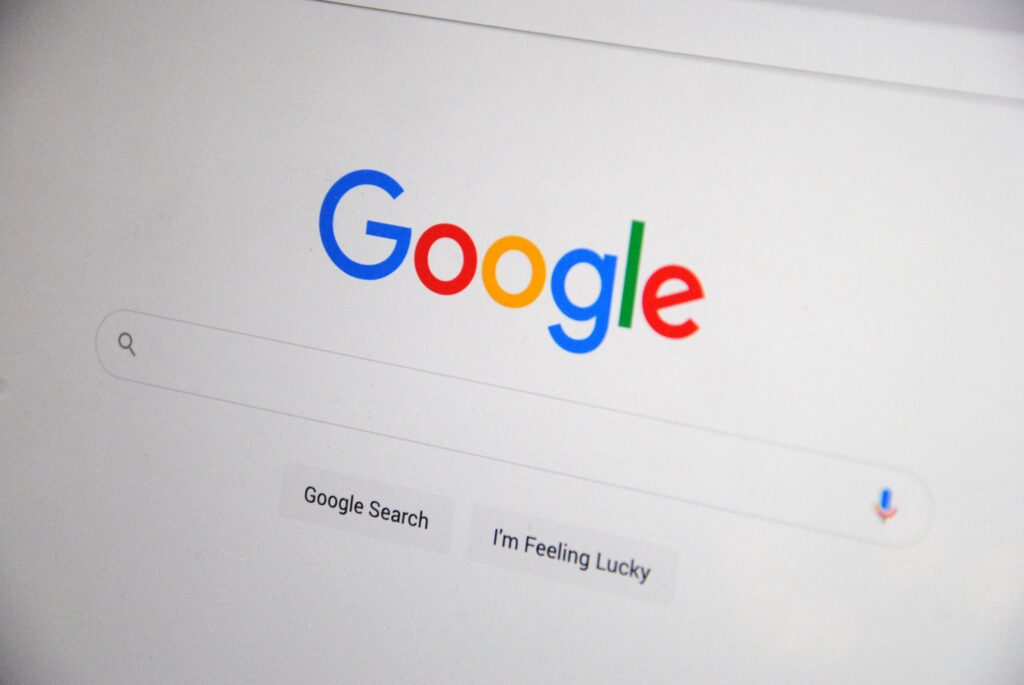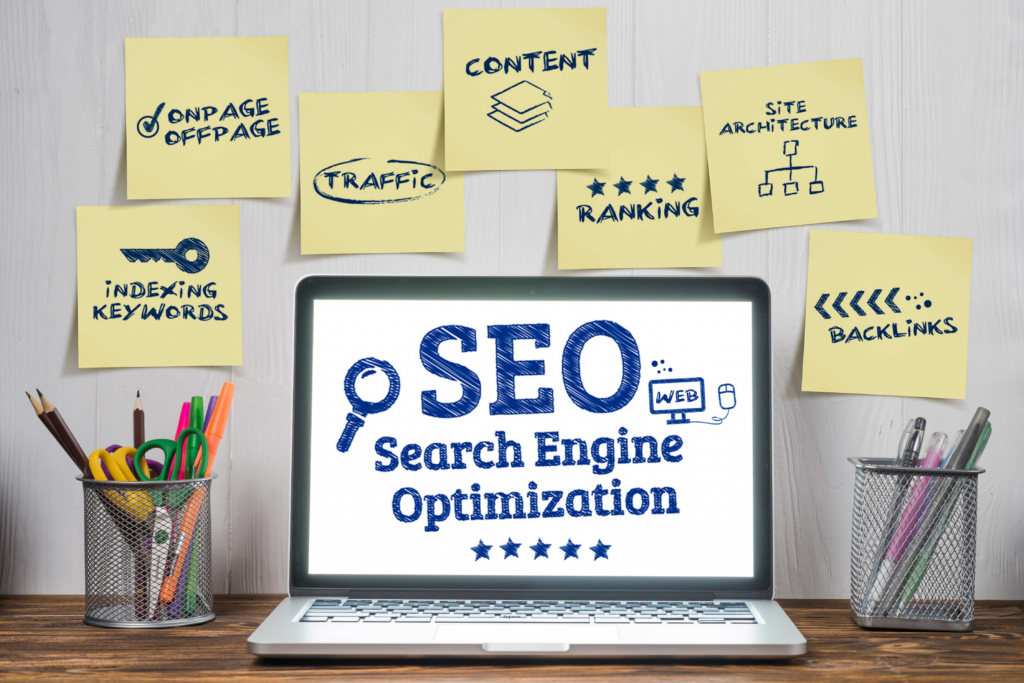Intro:
In the intricate tapestry of web presence, the art of On Page SEO factors emerges as the master weaver, meticulously intertwining threads of relevance and visibility. Each element optimized – from meticulously chosen keywords elegantly infused within the content to the strategically crafted meta descriptions and headers – paints a vivid picture that search engines interpret with profound clarity. On Page SEO factors are not merely a technical ritual, but a resonant conversation that communicates the essence of your website’s purpose to both algorithms and users. As these optimizations synchronize, they kindle a beacon that guides search engine crawlers through the labyrinth of the internet, leading them to your digital doorstep. Through this symbiotic dance, On Page SEO factors illuminates the path to heightened visibility, elevating your website from the shadows into the spotlight it rightfully deserves.
On Page SEO factors:

Mastering Keyword Research and Optimization
In the bustling landscape of the internet, where every website competes for attention, the spotlight often falls upon those who have mastered the intricate dance of keyword research and optimization. This dynamic duo holds the key to unlocking your website’s true potential, guiding it toward visibility and resonance in the vast digital sea. Its heart to On Page SEO factors.
Importance of Targeted Keywords
Imagine keywords as the compass points that guide users to your virtual doorstep. These words are not mere placeholders; they encapsulate user intent, reflecting their desires, queries, and needs. The importance of targeted keywords cannot be overstated; they bridge the gap between what users seek and what your content provides. Ignoring this foundational aspect is akin to whispering in a crowded room; your message gets lost amidst the noise.
Conducting Keyword Research
Keyword research is a blend of data exploration and understanding the psychology behind user queries. This phase is your entry ticket to the minds of your potential audience. It’s a treasure hunt for insights that help you grasp what your audience is searching for, uncovering the words they use to express themselves. There’s a wealth of tools and platforms at your disposal to aid this quest, allowing you to decode search patterns and stay attuned to evolving trends.
Selecting Primary and Secondary Keywords
As you sift through the treasures unearthed during keyword research, the next step is to curate a tailored selection. Primary keywords are the stars of the show – they encapsulate the core essence of your content and are often high-impact terms that wield the most relevance. Secondary keywords play the supporting role, adding depth and addressing specific nuances. This strategic pairing ensures that your content aligns with a wide array of user intentions.
Strategic Keyword Placement
Having gathered your arsenal of keywords, the battlefield shifts to strategic placement. Here’s where the magic happens:
- Title Tags: The first impression counts. Incorporate your primary keyword naturally into your title tag to signal relevance to search engines and users alike.
- Headings and Subheadings: These provide structure to your content. Use headings to guide both readers and search engines through your content, including keywords where they naturally fit.
- Content Body: Sprinkle your keywords throughout your content, but remember – readability and authenticity come first. Keywords should flow seamlessly and enhance the user experience.
- Meta Descriptions: Craft compelling meta descriptions that include your keywords. While not a direct ranking factor, they influence click-through rates.
- Image Alt Text: Images are a powerful tool, and alt text provides context to both users and search engines. Incorporate keywords in a meaningful and relevant manner.
Emphasizing High-Quality Content
Quality isn’t a mere aspiration; it’s a non-negotiable cornerstone of impactful content. In a world inundated with information, standing out requires substance and depth. High-quality content isn’t just informative; it’s insightful, engaging, and answers the questions that linger in the minds of your audience.
Writing for the Audience and Search Engines

The artistry of content creation lies in the ability to write for both humans and algorithms. While it’s crucial to weave in relevant keywords for search engine visibility, it’s equally vital to speak to the hearts of your readers. Striking this balance is a skill that separates great content from the merely good.
The Importance of Uniqueness and Originality
In the vast expanse of the internet, originality is your passport to recognition. Search engines value unique content that brings fresh perspectives to the table. Copy-pasting or regurgitating information not only undermines your credibility but also fails to captivate your audience.
Structuring Content for Readability
The structure of your content is the canvas on which your narrative unfolds. Here’s how to make it a masterpiece:
- 1. Using Proper Headings: Headings act as signposts for readers, guiding them through your content. Incorporate keywords naturally into headings to provide context to search engines and improve readability.
2. Paragraph Formatting: Walls of text deter even the most determined readers. Break content into bite-sized paragraphs to enhance readability. Each paragraph should flow seamlessly into the next, maintaining the thread of your narrative.
3. Bullet Points and Lists: These are your content’s allies in the battle against information overload. Bullet points and lists lend clarity to complex topics, making them easy to skim while retaining key takeaways.
Header Tag Optimization
A. Proper Use of H1, H2, H3 Tags: Header tags aren’t just cosmetic embellishments; they’re your content’s backbone. Each tag carries a specific weight, with H1 being the most important. Use them judiciously to structure content logically and guide readers through your narrative. It’s one of the most On Page SEO factors
B. Hierarchical Organization of Content: Imagine your content as a well-organized library. Header tags are like labels that direct visitors to the right section. Hierarchical arrangement not only aids readability but also communicates content hierarchy to search engines.
C. Including Keywords in Header Tags: Incorporating relevant keywords into header tags signals to search engines what your content is about. However, don’t force keywords – let them flow naturally within the context.
URL Structure and Permalinks
A. Creating SEO-Friendly URLs: URLs are digital addresses, and like any address, they should be clear and concise. Avoid convoluted strings of characters; opt for URLs that hint at the content’s topic.
B. Using Descriptive and Concise URLs: A descriptive URL gives users an instant idea of what to expect on the page. Clarity is key – a well-structured URL enhances user trust and search engine comprehension.
C. Including Primary Keywords in URLs: Integrating primary keywords into URLs provides an additional layer of context for search engines. Don’t stuff your text with keywords; keep it relevant.
D. Avoiding Dynamic and Complex URLs: Dynamic URLs with symbols and numbers can confuse both users and search engines. Opt for static, clean URLs that contribute to a seamless user experience.
Image Optimization
A. Compressing Images for Faster Loading: Visual appeal is crucial, but not at the cost of loading speed. Compressing images maintains aesthetics while ensuring swift loading times. It’s one of the best On Page SEO factors.
B. Using Descriptive Filenames for Images: Meaningful filenames help search engines understand image content.
C. Adding Relevant Image Alt Text: Alt text acts as a voice for visually impaired users and a guide for search engines. Descriptive alt text improves accessibility and contributes to SEO.
D. Optimizing Image Sizes for Responsiveness: Mobile devices dominate browsing. Resize images to ensure they adapt seamlessly across various screen sizes, avoiding slow loading times and poor user experiences.
Navigating | Mastering Internal Linking:
A. Importance of Internal Links
Internal links are the digital bridges that connect one part of your website to another. They go beyond mere navigation, enabling users to explore deeper layers of your content universe. From an SEO perspective, internal links contribute to the distribution of page authority and facilitate search engine crawling, ensuring that every corner of your website gets its deserved spotlight. It’s fundamental On Page SEO factors.
B. Linking to Relevant and Related Content
Just as a library’s books are interconnected based on thematic relevance, your content should interlink in a way that tells a comprehensive story. Relevant internal links guide users from one piece of content to another, creating a journey that answers questions, solves problems, and nurtures curiosity. This not only deepens user engagement but also encourages longer dwell times – a factor search engines appreciate.
Mobile-Friendly Optimization
A. Significance of Mobile Responsiveness: Mobile devices have become the primary gateway to the digital world. A mobile-friendly website is not just a choice; it’s imperative. Google’s mobile-first indexing places paramount importance on responsive design.
B. Mobile-Friendly Design and Layout: Designing for mobile goes beyond resizing elements. It involves crafting a layout that adapts seamlessly to various screen sizes, ensuring that content is accessible and readable across devices. Now a days its become compulsory On Page SEO factors.
C. Ensuring a Smooth User Experience on Mobile Devices: User experience on mobile should mirror the ease of browsing on desktops. Fast loading times, intuitive navigation, and touch-friendly elements contribute to an experience that keeps visitors engaged.
Page Speed and Performance
A. Impact of Page Speed on SEO: Page speed isn’t just about user experience; it’s a critical factor in SEO. Search engines favor fast-loading websites because they provide a better user experience.
B. Tools to Measure and Improve Page Speed: An array of tools, like Google PageSpeed Insights and GTmetrix, offer insights into your website’s loading performance. These tools identify areas for improvement, allowing you to fine-tune your site.
C. Optimizing Images and Scripts for Faster Loading: Images and scripts are often the culprits behind sluggish page speed. Compressing images, leveraging browser caching, and minimizing unnecessary scripts contribute to a swifter loading experience.
Conclusion:
In the intricate tapestry of the digital world, where visibility is the currency of success, mastering the art of On-Page SEO techniques becomes the beacon guiding us toward prominence. As we conclude our exploration of these techniques, it’s clear that they form the cornerstone of a robust online presence. From crafting captivating content that resonates with both users and search engines, to optimizing technical aspects like headers, URLs, images, and page speed, every strategy intertwines to create a harmonious symphony that elevates your website’s visibility.
FAQ:
1. What is On-Page SEO?
On-Page SEO optimizes your site’s pages for search engines. It enhances content, tags, and code to improve visibility and ranking.
2. Why is it important On Page SEO factors?
On Page SEO factors boost search rankings, organic traffic, and user experience by making your site more relevant and appealing.
3. What to focus on?
Prioritize keywords, valuable content, titles, headings, URLs, images, and internal links for optimal results.
4. How to choose keywords?
Use research tools to find relevant keywords with good search volume and balance. Opt for niche-specific long-tail keywords.
5. Ideal keyword density?
Maintain natural flow—avoid overusing keywords. Quality content matters more than density.
6. Mobile optimization’s role?
Mobile-friendly sites are essential for good rankings as most users are on mobile devices.
7. Content vs. technical optimization?
Both are vital. Quality content and proper technical optimization create a winning combination.
8. Update old content or create new?
Both work. Update older content with new info, and create fresh, engaging content for better results.
9. How to track success?
Use tools like Google Analytics and Search Console to monitor organic traffic, keyword rankings, and user engagement.
10. Is On-Page SEO a one-time task?
No, it’s ongoing. Regularly optimize to adapt to algorithm changes, evolving user preferences, and updated content.





